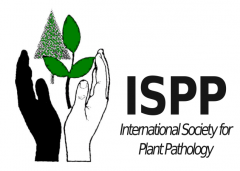
Trichoderma Species: Versatile Plant Symbionts
Phytopathology
2019 - Vol. 109 - n° 1 - pag. 6-16Authors: Paulina Guzmán-Guzmán, María Daniela Porras-Troncoso, Vianey Olmedo-Monfil,† and Alfredo Herrera-Estrella
Because of the need to provide food for the growing population, agricultural activity is faced with the huge challenge of counteracting the negative effects generated by adverse environmental factors and diseases caused by pathogens on crops, while avoiding environmental pollution due to the excessive use of agrochemicals. The exploitation of biological systems that naturally increase plant vigor, preparing them against biotic and abiotic stressors that also promote their growth and productivity represents a useful and viable strategy to help face these challenges. Fungi from the genus Trichoderma have been widely used in agriculture as biocontrol agents because of their mycoparasitic capacity and ability to improve plant health and protection against phytopathogens, which makes it an excellent plant symbiont. The mechanisms employed by Trichoderma include secretion of effector molecules and secondary metabolites that mediate the beneficial interaction of Trichoderma with plants, providing tolerance to biotic and abiotic stresses. Here we discuss the most recent advances in understanding the mechanisms employed by this opportunistic plant symbiont as biocontrol agent and plant growth promoter. In addition, through genome mining we approached a less explored factor that Trichoderma could be using to become successful plant symbionts, the production of phytohormones—auxins, cytokinins, abscisic acid, gibberellins, among others. This approach allowed us to detect sets of genes encoding proteins potentially involved in phytohormone biosynthesis and signaling. We discuss the implications of these findings in the physiology of the fungus and in the establishment of its interaction with plants.
Indietro Allegati
phyto-07-18-0218-rvw.pdf (1 MB)




